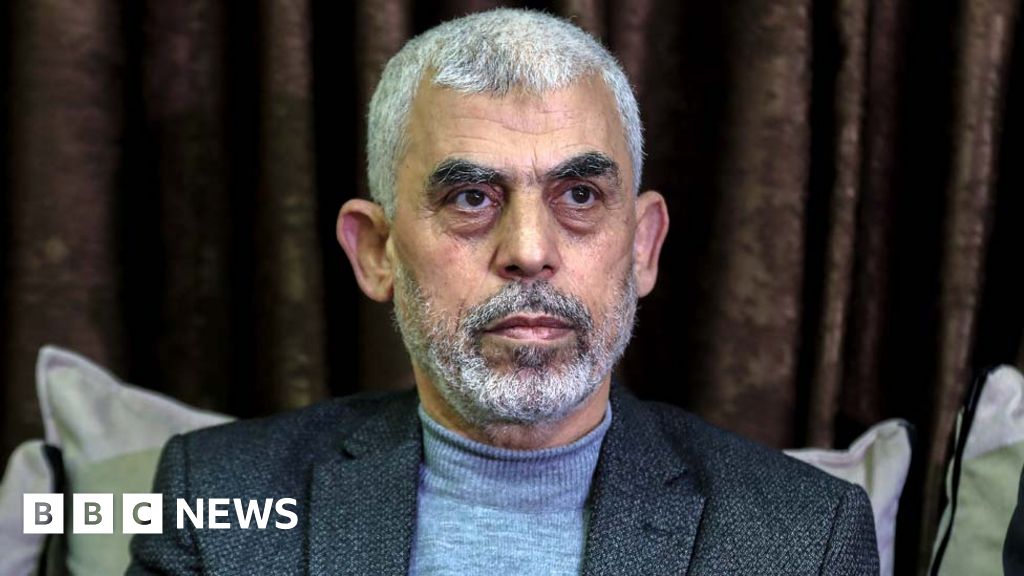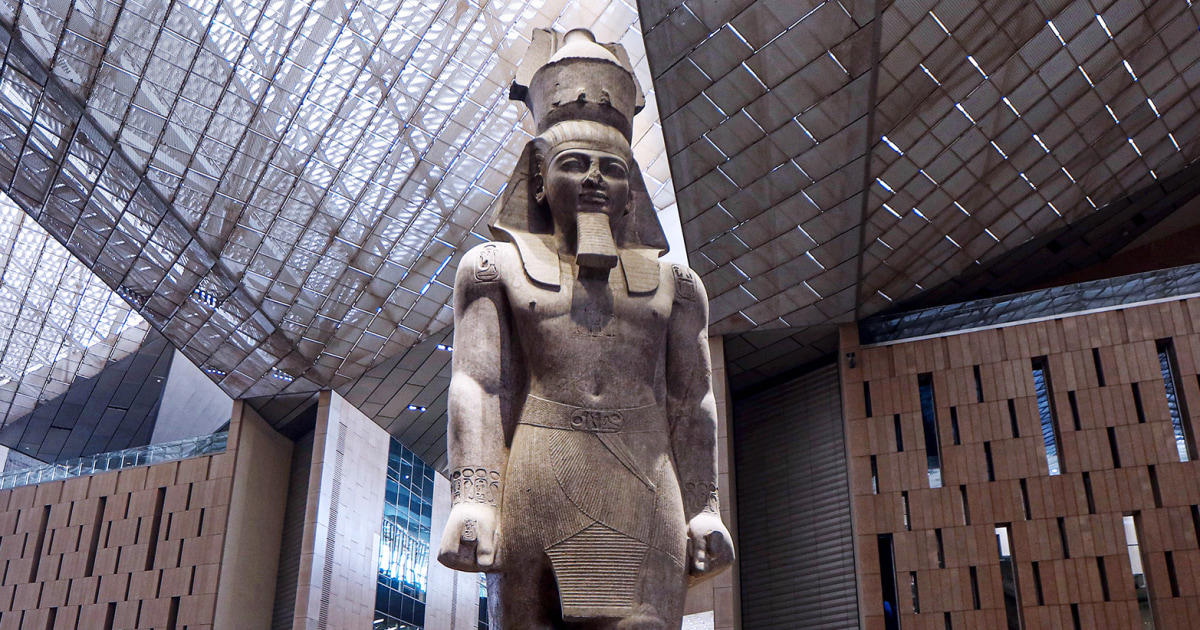- Arvind's Newsletter
- Posts
- Arvind's Newsletter-Weekend edition
Arvind's Newsletter-Weekend edition
Issue No. #1110
1.Tata Group’s Succession Drama: Will Noel Tata Restore Stability or Trigger New Tensions?
There is much drama happening at the Tata group headquarters. And everyone who matters, which includes the Government of India, is watching the developments unravel with much interest. After all, this is India’s most significant conglomerate. Now, Naval Tata has been anointed chairman of the group. Sucheta Dalal dissects what it means in MoneyLife.
Meanwhile, Noel Tata, Chairman of Tata Trusts joins Tata Sons board as Director.
2.Indigo is also India’s largest Regional Airline
Under their umbrella organisation Federation of Indian Airlines, mainline airlines went to court against the rollout of regional air-connectivity scheme Udan. Eight years later, the biggest of them all- Indigo, is found to be cornering 40% of the subsidies given for flying unserved and underserved routes.
In the last three financial years ending 2023-24 the government released nearly INR2,200 crore towards regional flights. Of this, the biggest chunk of INR800 crore has gone to IndiGo. In effect, the airline has cornered nearly 40% of this subsidy.
Alliance Air is next with INR475 crore, SpiceJet got INR348 crore, Star Air received INR258 crore and FlyBig made INR181 crore.
3.Disney-Reliance JV to carry all live sports content on Hotstar
All live sporting events streamed by the newly merged Disney-Reliance business in India, including popular Indian Premier League (IPL) cricket, will only be available on Disney's Hotstar app, three sources familiar with the matter told Reuters.
The decision marks the first major integration of the businesses and signals billionaire Mukesh Ambani's Reliance, which holds a majority of the new venture, doesn't plan to shut the Disney platform, though it is unclear if Hotstar might be rebranded.
4.Yahya Sinwar, the military head and de facto leader of Hamas, was killed
Sinwar had long been considered Israel's top target and is believed to have been the architect of the Oct. 7 attack in Israel, which killed almost 1,200 people and kick-started the current Israel-Hamas war.
Sinwar, designated a terrorist by the US, has a winding personal biography. Born in a Gazan refugee camp in 1962, he spent more than two decades in an Israeli prison starting in 1988—during which time an Israeli doctor removed a tumour from his brain. Released in 2011 in a prisoner exchange, Sinwar quickly became a senior figure in Hamas, planning a number of attacks in the intervening decade.
Sinwar is the latest in a number of top Hamas and Hezbollah commanders to be killed by Israeli forces in recent weeks. His death represents “a massive victory” for
Prime Minister Benjamin Netanyahu, who has shown little sign of relenting in his military campaign in Gaza, an expert at the Center for Strategic and International Studies said. And Sinwar’s killing probably won’t end Israel’s operations in Lebanon or reduce the risk that it will strike Iran, an Atlantic Council analyst noted: “It is far from the end of the book.”
Thomas Friedman: “The death of Sinwar alone is not the sufficient condition to end this Gaza war and put Israelis and Palestinians on a pathway to a better future. Yes, Sinwar and Hamas always rejected a two-state solution and were committed to the violent destruction of the Jewish state. No one paid a bigger price for that than the Palestinians of Gaza. But while his death was necessary for a next step to be possible, it was never going to be everything.”
5.China’s economy grew at its slowest pace since the country lifted pandemic-era restrictions, highlighting the risks of a flailing property sector.
Though data suggested authorities’ annual growth targets may be out of reach, there were bright spots: Over-expansion beat forecasts, as did retail sales and industrial production figures. “Despite the multitude of challenges, China’s economy is not incurable as some would suggest,” an expert at the Economist Intelligence Unit said.
However longer-term problems — including a mammoth debt burden and an aging population— persist, with Barclays analysts arguing that China’s economy has “become more Japanised than Japan’s,” referencing Tokyo as a symbol of economic stasis.
6.Ozempic and other weight loss drugs could help treat alcohol and drug addiction, study says
Drugs such as Novo Nordisk’s blockbuster Ozempic can cut drug and alcohol abuse by up to 50% according to a new study, adding to mounting evidence that the drugs yield health benefits beyond diabetes and weight loss.
In a study published Thursday in scientific journal Addiction, around 500,000 people with a history of opioid use disorder were analyzed, of which just more than 8,000 were taking either GLP-1 drugs such as Ozempic or the similar GIP class of drugs that Eli Lilly’s Mounjaro belongs to.
GLP-1 drugs work by mimicking a gut hormone to control blood sugar and suppress appetite while GIP medications take a dual-target approach by mimicking both the GLP-1 hormone and a second gut hormone that is believed to enhance the drug’s effectiveness.
The study found that those taking the drugs had a 40% lower rate of opioid overdose compared with those who didn’t.
7.A portion of the Grand Egyptian Museum in Giza, Egypt, opened to visitors—part of the initial unveiling of an over $1Bn project designed to be the largest museum devoted to a single civilisation.
The museum—spanning over 5 million square feet or roughly the size of 80 football fields—will cover 700,000 years' worth of artifacts. The trial run, designed to test visitor flow and operations, includes 12 galleries devoted to four eras of Egyptian history dating as far back as 2649 BCE.
Among the displays are the gold mask of Tutankhamun, the boy-king who ruled Egypt about 3,350 years ago; an 83-ton statue of legendary pharaoh Ramses the Great; and the world's first hanging obelisk, suspended to allow a view of hidden carvings beneath.
Over 100,000 artifacts will be stored when the museum opens fully to visitors, a date not yet determined.
8.SpaceX could soon overtake Tesla in value. Elon Musk’s rockets are nifty but it is satellites that make SpaceX valuable; A long (weekend) briefing in the Economist
There was no mistaking the feat of engineering. The bottom half of the biggest object ever flown—by itself as tall as a 747 is long—came hurtling out of the sky so fast that it glowed from the friction. With the ground rushing to meet it, a cluster of its engines briefly relit, slowing the rocket and guiding it carefully back towards the same steel tower from which it had launched just seven minutes previously. A pair of arms swang closed to catch it, leaving it suspended and smoking in the early-morning sunshine.

Less obvious than the kinetic marvels, but even more important, are the economics of Starship, as the giant rocket tested on October 13th is known. The firm that built it, SpaceX, was founded in 2002 by Elon Musk, an entrepreneur, with the goal of slashing the expense of flying things to space. For Mr Musk, the purpose of such cost-cutting is to make possible a human settlement on Mars. But it has also made new things possible back on Earth. Over the past four years, SpaceX has become a globe-straddling internet company as well as a rocket-maker. Its Starlink service uses what would, a few years ago, have been an unthinkably large number of satellites (presently around 6,400, and rising fast) to beam snappy internet access nearly anywhere on the planet.
Excitement about Starlink’s prospects has seen SpaceX’s valuation rise to $180bn (see chart 1). Some analysts are even beginning to wonder whether it might one day match or exceed the value of Tesla, an electric-car firm of which Mr Musk is also CEO. If Starship lives up to its promise, its combination of vast size and bargain-basement price could provide a big boost to the economics of space in general—and of Starlink in particular.

SpaceX’s Falcon rockets have already slashed the cost of space flight, partly thanks to the fact that their lower stages, unlike those of almost any other rocket, can be recovered and flown again. According to an estimate by Citigroup, a bank, the Falcons can send a tonne into space at about a tenth of the cost that prevailed a decade ago. Figures from BryceTech, a firm of analysts, show that in the first quarter of this year the firm shot almost seven times as much into orbit as all its rivals put together, be they private firms or national space programmes (see chart 2).
But as disruptive as the Falcons have proved, they are relatively small and only partly and slowly reusable. Their upper stages are discarded and their lower stages take weeks to refurbish before they can fly again. Starship is intended to finish the job. Both halves of the rocket are designed to be reusable, and quickly to boot. Mr Musk hopes to drive turnaround times down from weeks to hours. The rocket is huge, designed to carry perhaps 150 tonnes into orbit, far more than the 18 of the Falcon 9, SpaceX’s current workhorse.
Despite Starship’s enormous size, it is intended to be cheaper than a Falcon, too. SpaceX charges $70m to launch a Falcon 9. It hopes to drive down the cost of a Starship launch to $10m. The eventual goal is to transform the rocket business into something more like the aircraft one, via the mass production of a vehicle that is designed to be refuelled quickly and flown again and again. Mr Musk’s aspiration is that the “Starfactory” that SpaceX is building at its headquarters in Texas will churn out a new Starship every day, and that the firm’s fleet of them will fly hundreds or even thousands of times a year.
Mr Musk is famous for making grand predictions, only some of which come to pass. But when he started Starlink he said his only ambition was not to go bankrupt, with good reason. Something similar had been tried, albeit on a much smaller scale, by firms including Teledesic and GlobalStar at the height of the dotcom boom. All of them went bust. But as far as anyone can tell, Starlink is thriving.
Its distinctive white antennae have popped up everywhere from remote schools in the Amazon to the bunkers and trenches on the front lines of the war in Ukraine. “I’ve [even] seen a Starlink dish tied to a broom handle and mounted on a public toilet in the Lake District,” says Simon Potter of BryceTech. In September the firm announced it had signed up 4m customers. Traffic through its networks has more than doubled in the past year, as SpaceX has signed deals with cruise lines, shipping firms and airlines.
Modelling by Quilty Space, another firm of analysts, suggests that Starlink’s revenue will hit $6.6bn this year, up from $1.4bn in 2022. That is already 50% more than the combined revenue of SES and IntelSat, two big satellite-internet firms that announced a merger in April. A year ago Mr Musk said that Starlink had achieved “break-even cashflow”. “It’s astounding that a constellation of this size can be profitable,” says Chris Quilty. “And it scares the shit out of everyone else in the industry.”
Using satellites to provide internet access is not a new idea. Such firms as Hughes, SES and ViaSat already offer exactly this service, bouncing signals from subscribers back down to ground stations and on to the wider internet. But they rely on small numbers of satellites mostly in high orbit. That allows a single satellite to see a large portion of Earth’s surface and thus to serve many customers at once.
Unfortunately, flying so high also means that signals take a noticeable amount of time to get up to the satellite and back down to Earth. That makes remote working, video calls and online gaming a pain. And having lots of people share one satellite risks congestion. For that reason, says Mr Potter, satellite internet has been seen as a last-resort option, useful only when nothing better is available.

Starlink’s satellites fly in very low orbits, around 500km up. That slashes transmission delays, allowing Starlink to offer a connection similar to ground-based broadband. The trade-off is that each satellite can serve only a small area of Earth. To achieve worldwide coverage you therefore need an awful lot of satellites. According to Jonathan McDowell of the Harvard-Smithsonian Centre for Astrophysics, the 6,400 or so Starlink satellites launched since 2019 account for around three-quarters of all the active satellites in space (see chart 3). SpaceX has firm plans to deploy 12,000 satellites, and has applied to launch as many as 42,000.
The Falcon 9 launches a couple of dozen Starlink satellites at a time. Starship should be able to carry more, bigger ones. Mr Musk says that only Starship will be able to transport the next generation, with ten times more bandwidth. And even when Starlink’s constellation is complete, Starship will have plenty of work to keep it busy. One consequence of the satellites’ low orbits is that each has a lifetime of only around five years, before the tenuous atmosphere at that altitude drags it below orbital velocity. To maintain a constellation of 40,000-odd satellites would require replacing about 8,000 of them a year.
Cheap launch costs are not the only secret of Starlink’s success. Vertical integration helps, too. SpaceX makes its own satellites and the high-tech antennas it sells to its customers. Not having to pay suppliers’ profit margins helps keep costs down, says Mr Potter.
So does mass production: by making so many satellites and antennas, the firm can drive unit costs down. Gwynne Shotwell, SpaceX’s chief operating officer, has noted that each antenna cost the firm around $3,000 to make in the early days. Since it was selling them for $499, that meant absorbing a big loss on each new customer. Last year SpaceX said it had managed to drive the cost of production below $599, the price at the time.
A system made of thousands of comparatively small satellites rather than a handful of big ones can also be more easily tweaked and upgraded. Starlink’s newer satellites, for instance, sport laser links that allow them to talk to each other directly. That allows traffic to be routed between satellites before it is sent back down to Earth. That should limit the number of ground stations that Starlink needs to build—an important saving, says Mr Quilty, who thinks that running the network’s 150-odd ground stations accounts for more than half of Starlink’s operating costs.
In January SpaceX launched the first of a new, more powerful batch of satellites designed to allow smartphones to connect to Starlink using the existing 4G mobile standard, without any special antenna. The idea is to keep phones connected even when they are beyond the reach of terrestrial networks. The system will start with simple text messages, before eventually moving on to voice and data services.
SpaceX announced its first “direct-to-cell” deal of this sort with T-Mobile, a mobile network, in America in 2022, and has since signed similar agreements with firms in various countries including Australia, Canada and Japan. It had been due to switch on the American service next year. But earlier this month the firm announced that it would activate a “best-effort” version immediately in areas hit by Hurricane Helene, which would allow T-Mobile phones to receive emergency alerts from the authorities even when mobile-phone masts had been knocked out by the storm.
Since it has never before been possible to build something like Starlink, no one is quite sure how big or profitable it might end up becoming. Morgan Stanley, a bank, forecast earlier this year that Starlink might have 32m subscribers by 2040, earning it around $100bn a year in revenue, or around three-quarters of the bank’s prediction of SpaceX’s total revenue.
Morgan Stanley also outlined optimistic and pessimistic scenarios. In the former, Starlink signs up 80m subscribers and brings in $250bn-300bn a year, more than twice as much as Tesla earned last year. In the latter, in which Starship is delayed and subscribers are scarcer than imagined, revenues reach just $40bn a year.
In all these scenarios the bulk of Starlink’s revenue comes from households in remote areas. Serving such customers was the firm’s original plan and, on paper, it is a big market. The International Telecommunication Union (ITU) reckons about 2.6bn people worldwide lack reliable internet access. Even in America, the government says 22% of households in rural areas cannot get a decent connection. At a broadband-industry conference on August 6th Ms Shotwell declared that her firm could connect every one of those under-served Americans, and much more cheaply than by laying fibre-optic cables.
Most of the unconnected live in poor countries. SpaceX charges $120 a month in America—a sum few in the developing world could afford. It has experimented with lower prices in other countries; high volumes might conceivably compensate for slimmer margins. It has also signed deals with mobile-phone networks in Africa and in Europe to use its satellites to connect remote masts to the internet.
Other dollops of revenue come from the airline and shipping industries. SpaceX has already signed deals with Carnival and Royal Caribbean, the world’s two biggest cruise lines, and with Maersk, a Danish cargo-shipping giant. Air France, Qatar Airways and United Airlines have said they will use Starlink antennae to provide free wifi for passengers, as have smaller airlines such as Air New Zealand.
Morgan Stanley notes that it is not just phones that connect to the mobile network; most modern cars (including Mr Musk’s Teslas) do so as well, as do other devices from drones to wind turbines. It thinks this market might in time provide a third of Starlink’s revenue. Governments may contribute some revenue, too. Shortly after Russia’s full-scale invasion of Ukraine in 2022 SpaceX announced that it had set up a division called Starshield, to supply Starlink-like satellites to customers in government. In 2021 the firm reportedly signed a $1.8bn contract with the National Reconnaissance Office, which operates America’s spy satellites.
Starlink might one day provide connectivity above Earth as well as on it. On a recent crewed mission, astronauts tested one of its laser-communication modules aboard its Dragon spaceship, which allowed them to connect to the network while in space. (It is also Starlink that allows SpaceX to broadcast footage from Starship test flights even when the rocket is out of range of ground-based cameras.) In March Ms Shotwell announced plans to sell the laser modules to other satellite operators, offering them cheap and easy connectivity in orbit.
Not everyone welcomes Starlink. The service has been banned in several African countries, including Burkina Faso, Cameroon and Senegal. Some governments may be wary of an American-owned internet provider whose infrastructure sits in orbit, beyond easy reach. SpaceX has already experimented—with the encouragement of America’s government—with providing uncensored internet access in Iran to anyone with a smuggled antenna, despite a formal complaint from the Iranian authorities, upheld by the ITU.
Space X’s politics do not seem consistent. Starlink has not tried to get around censors in China, for instance, where Tesla makes and sells lots of cars. Mr Musk refuses to allow Ukraine’s army to use Starlink when attacking Russian forces in Crimea, even though the peninsula is Ukrainian territory. And he has gone back and forth in a row over regulation of the internet in Brazil. A judge there ordered internet providers to cut access to X, a social network that he owns. SpaceX at first refused to comply, but later reversed course.
SpaceX has competitors, too, though none that quite match its low costs and enormous scale. A firm called Eutelsat OneWeb uses a fleet of more than 630 satellites to pursue a similar business model, although it deals only with businesses, rather than selling directly to consumers as SpaceX does. On October 15th a Chinese firm named Shanghai Spacecom Satellite Technology launched a second batch of satellites in what it hopes will become a 14,000-strong low-flying constellation of its own, named Qianfan.
Then there is Amazon, whose founder, Jeff Bezos, is just as much of a space cadet as Mr Musk. Amazon’s planned Kuiper constellation will consist of 3,200 satellites and, in theory at least, will begin signing up customers next year (it has so far launched only two prototype satellites). Lacking in-house access to cheap rockets, Amazon ended up placing the biggest order in the history of the space business, buying 83 launches from assorted rocket firms including United Launch Alliance (a joint venture of Boeing and Lockheed Martin, two aerospace firms), Arianespace (a European outfit) and Blue Origin, Mr Bezos’s space firm, which is due to conduct the first test flight of its own big reusable rocket, New Glenn, in November.
The political pitfalls and unproven rivals make it even harder to judge SpaceX’s potential. But it has a huge head start, a proven capacity to innovate and a determined if unpredictable leader in Mr Musk. As Starlink’s costs come down and its kit improves, its universe of potential customers grows. In the not-too-distant future, markets may get a chance to assess its prospects: Mr Musk has said several times that he may spin Starlink out of SpaceX when the business is mature enough.
That would leave SpaceX free to focus on getting cargo and people to Mars. Starlink’s terms of service assert that Mars is “a free planet” over which no earthly government has “authority or sovereignty”, and that any disputes over Starlink services provided on Mars will be settled through principles “established in good faith at the time of Martian settlement”. Those who dismiss this as nerdy bravura should contemplate the sky above their heads.










